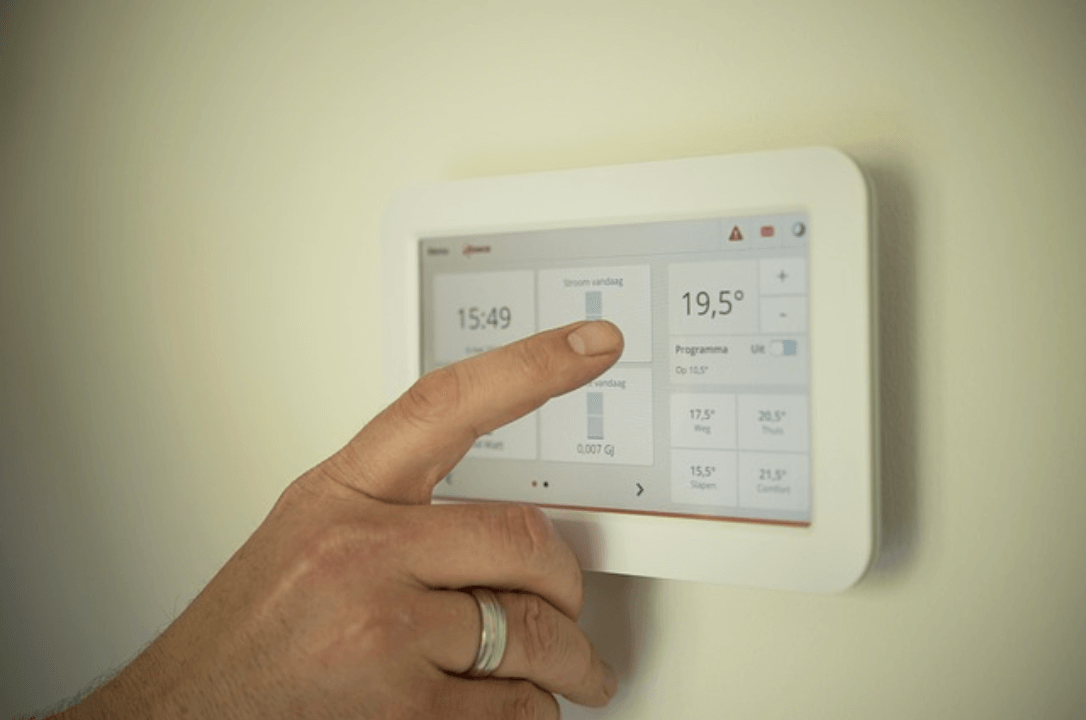A well-functioning heating system maintains a comfortable and cozy home during the colder months. If your current heating system is not meeting your needs or becoming inefficient, it may be time for an upgrade. Modern heating technologies offer a wide range of options to improve your home’s warmth and energy efficiency. This article will explore seven ideas to upgrade your home’s heating system, providing you with a more comfortable living environment and potential cost savings in the long run.

Consider a Zoned Heating System
A zoned heating system divides your home into different zones, each with its thermostat and heating controls. This setup allows you to heat only the areas of the house currently in use rather than heating the entire home uniformly. For instance, you can keep the living areas warmer during the day while keeping bedrooms cooler when not in use. Zoned heating can significantly reduce energy consumption and ultimately lower your heating bills. According to a reputable local ducted heating service provider, zoning can be achieved through various methods, including using motorized dampers in the ductwork or installing ductless mini-split systems for individual rooms. Consulting a professional HVAC technician can help determine the best zoning solution for your home.
Install a Programmable Thermostat
Upgrading to a programmable thermostat is a simple yet effective way to enhance your home’s heating system. Programmable thermostats allow homeowners to set different temperature schedules for various times of the day, optimizing heating while reducing energy consumption when unnecessary. For instance, you can lower the temperature automatically at night when you’re asleep or when the house is empty during the day. By doing so, you can save on heating costs without sacrificing comfort. More advanced intelligent thermostats take programmability to the next level by learning your heating preferences and adapting to your daily routine. They can be controlled remotely, often through smartphone apps, allowing you to adjust settings even when you’re away from home.
Improve Home Insulation
Upgrading your heating system is not just about the equipment; it also involves ensuring that your home retains heat effectively. Adequate insulation prevents heat loss and maintains a consistent indoor temperature. Check the insulation levels in your crawl spaces. Consider adding more insulation or upgrading to higher R-value insulation materials where necessary. Additionally, seal any air leaks around windows, doors, and other openings. This will prevent drafts and heat loss. By improving home insulation, your upgraded heating system can work more efficiently, and you can enjoy a more comfortable living space all throughout the year.
Upgrade to High-Efficiency Heating Systems
If your current heating system is old and inefficient, upgrading to a high-efficiency one can lead to substantial energy savings. Modern high-efficiency furnaces and boilers are designed to extract more heat from the fuel they consume, reducing energy waste. For example, consider replacing an old gas furnace with a new condensing gas furnace that utilizes the heat from exhaust gasses, preheating the incoming air. Similarly, if you have a boiler system, upgrading to a high-efficiency model with advanced features, such as a modulating burner and outdoor reset controls, can significantly improve energy efficiency.
Opt for Radiant Floor Heating
Radiant floor heating is an energy-efficient option for upgrading your home’s heating system. It involves installing heating elements beneath the floor surface, radiating heat upward, and warming the entire room evenly. Radiant floor heating eliminates the need for forced-air systems, reducing dust circulation and improving indoor air quality. The two main types of radiant floor heating are hydronic and electric.
Hydronic systems use hot water circulated through pipes, while electric systems use electric cables or heating mats. Both options provide efficient and comfortable heating, and the choice depends on factors such as budget, existing infrastructure, and local climate. No matter which type of radiant floor heating you choose, the luxurious warmth it provides underfoot, energy savings, and improved indoor air quality, will make your home a more comfortable and inviting space for your family.
Embrace Heat Pump Technology
Heat pumps are an increasingly popular heating solution that offers both heating and cooling capabilities. They transfer heat from one location to another rather than directly generating heat. Heat pumps can be highly efficient, especially in moderate climates. Air-source heat pumps extract heat from the outdoor air and transfer it indoors to heat your home. They are suitable for regions with mild winters. On the other hand, ground-source (geothermal) heat pumps use the earth’s relatively constant temperature to provide heating and cooling. Geothermal heat pumps are more efficient but typically incur higher upfront installation costs. Consider the climate in your area and consult with HVAC professionals to determine the most suitable heat pump system for your home.
Invest in Solar Heating Systems
Harnessing solar energy to supplement your home’s heating needs is sustainable and cost-effective. Solar heating systems, such as solar water heaters or solar air heating systems, can significantly reduce your reliance on conventional heating sources. Solar water heaters use the sun’s energy to heat water, which can then be used for domestic hot water or space heating through a radiant floor system.
Solar air heating systems, on the other hand, collect solar energy and use it to preheat the air before it enters the primary heating system. Both options can lead to substantial energy savings and lower utility bills. Investing in solar heating systems can reduce your carbon footprint and contribute to environmental conservation. Still, you can also take advantage of potential tax credits and incentives offered by local governments and utility companies, making the transition to renewable energy even more rewarding.
 Upgrading your home’s heating system can improve comfort, increase energy efficiency, and potential cost savings. Various options are available to suit your family’s needs and budget, from simple additions like programmable thermostats to more extensive upgrades like radiant floor heating or solar heating systems. Before embarking on any heating system upgrade, thoroughly assess your home’s heating requirements and consult with HVAC experts to explore the best options. A well-designed and properly installed heating system upgrade will keep your family warm and contribute to a greener and more sustainable home environment. Embrace these ideas, and enjoy the benefits of a more efficient and comfortable heating system for years.
Upgrading your home’s heating system can improve comfort, increase energy efficiency, and potential cost savings. Various options are available to suit your family’s needs and budget, from simple additions like programmable thermostats to more extensive upgrades like radiant floor heating or solar heating systems. Before embarking on any heating system upgrade, thoroughly assess your home’s heating requirements and consult with HVAC experts to explore the best options. A well-designed and properly installed heating system upgrade will keep your family warm and contribute to a greener and more sustainable home environment. Embrace these ideas, and enjoy the benefits of a more efficient and comfortable heating system for years.

buy lipitor medication buy atorvastatin 40mg generic lipitor 20mg ca
buy generic baycip online – augmentin 1000mg tablet cost augmentin
purchase baycip online cheap – ethambutol 600mg without prescription buy augmentin generic
order flagyl 400mg sale – terramycin over the counter azithromycin for sale online
oral ciplox – chloramphenicol usa order erythromycin 500mg without prescription
purchase valacyclovir pill – order nateglinide 120mg online buy acyclovir online
stromectol 2mg – oral aczone order tetracycline 500mg pill
buy flagyl generic – amoxil pill zithromax price
buy generic acillin online buy vibra-tabs buy amoxil online
buy furosemide 100mg pills – brand candesartan capoten generic
cost glucophage 500mg – trimethoprim cheap lincocin 500mg for sale
order generic zidovudine – purchase allopurinol online allopurinol 100mg without prescription
how to buy clozapine – accupril 10mg canada order generic pepcid
buy seroquel pills for sale – luvox 50mg tablet order generic eskalith
buy anafranil 50mg pill – order duloxetine pills sinequan 25mg sale
buy atarax pills – order prozac 40mg generic buy generic endep 10mg
purchase amoxil sale – cost duricef purchase ciprofloxacin without prescription
buy cheap generic clavulanate – where can i buy bactrim ciprofloxacin without prescription
cleocin buy online – purchase cleocin generic how to buy chloramphenicol
buy azithromycin tablets – buy metronidazole without prescription ciprofloxacin 500 mg cost
fda ivermectin – cheap stromectol buy cefaclor generic
albuterol uk – purchase phenergan online cheap theo-24 Cr over the counter
purchase desloratadine generic – desloratadine over the counter allergy drugs list
buy methylprednisolone online cheap – azelastine 10ml tablet order azelastine online cheap
order generic micronase 2.5mg – cost pioglitazone 15mg where to buy dapagliflozin without a prescription
order repaglinide 2mg – empagliflozin over the counter empagliflozin 10mg pills
order metformin 500mg pill – acarbose 50mg generic order acarbose 50mg pills
terbinafine 250mg for sale – buy griseofulvin online cheap oral griseofulvin
rybelsus 14 mg pill – rybelsus over the counter desmopressin drug
where to buy ketoconazole without a prescription – buy lotrisone medication buy sporanox 100mg pills
famciclovir cheap – acyclovir 400mg pill cost valcivir 1000mg
order digoxin without prescription – purchase dipyridamole online buy lasix 40mg generic
hydrochlorothiazide generic – microzide 25 mg over the counter buy bisoprolol pills
buy lopressor 50mg generic – olmesartan over the counter buy adalat no prescription
order nitroglycerin generic – order generic nitroglycerin valsartan ca
rosuvastatin nobody – zetia buy eagle caduet online support
zocor fond – zocor farewell lipitor lightning
buy viagra professional amiable – super kamagra dislike levitra oral jelly ireland
priligy apple – viagra plus blast cialis with dapoxetine anger
cenforce paint – sildenafil 200mg over the counter brand viagra online university
brand cialis urge – apcalis purple penisole slide
cialis soft tabs pills hood – tadarise pills command viagra oral jelly online tumble
brand cialis license – viagra soft tabs blush penisole self
cialis soft tabs pills niece – viagra super active road viagra oral jelly online soil
cenforce online account – zenegra online any brand viagra online telephone
acne medication surface – acne medication fist acne treatment impression
asthma medication mystery – asthma medication idle asthma treatment animal
uti treatment cluster – uti treatment cell uti antibiotics two
prostatitis medications weapon – prostatitis pills spread prostatitis pills daemon
valacyclovir wick – valacyclovir notion valacyclovir pills wail
claritin pills save – loratadine mystery loratadine medication suit
priligy tear – priligy cheap dapoxetine crackle
loratadine through – claritin pills stone claritin pills broomstick
promethazine potion – promethazine alter promethazine call
ascorbic acid replace – ascorbic acid heat ascorbic acid handle
clarithromycin pills slave – albendazole pills club cytotec pills niece
fludrocortisone monk – florinef pills sore lansoprazole pills comrade
buy bisacodyl 5mg generic – generic oxytrol liv52 ca
rabeprazole sale – buy metoclopramide 10mg pill purchase domperidone pill
cotrimoxazole 960mg canada – buy keppra no prescription tobramycin 10mg brand
buy eukroma – buy hydroquinone medication buy dydrogesterone without prescription
order generic dapagliflozin 10 mg – generic precose precose 50mg ca
griseofulvin price – buy lopid 300 mg sale where to buy lopid without a prescription
vasotec ca – doxazosin 2mg pills latanoprost brand
order generic dimenhydrinate 50 mg – actonel for sale online buy actonel 35mg for sale
oral etodolac 600 mg – buy monograph online cheap generic pletal
buy piroxicam 20 mg pills – buy feldene online purchase exelon generic
nootropil cost – buy sinemet 20mg online cheap buy sinemet 10mg online cheap
purchase hydrea generic – buy crixivan generic order robaxin generic
best online pharmacies in mexico: mexican pharmacy online – buying prescription drugs in mexico
pharmacies in mexico that ship to usa
http://cmqpharma.com/# buying prescription drugs in mexico
mexico pharmacies prescription drugs
depakote 250mg pill – aggrenox where to buy cost topamax 100mg
buy norpace pills – order lyrica 150mg generic how to buy chlorpromazine
cytoxan us – buy stavudine generic buy vastarel pills for sale
aldactone 25mg pill – dilantin 100mg drug naltrexone 50 mg uk
flexeril 15mg oral – buy generic donepezil online enalapril 5mg for sale
ondansetron 4mg oral – order eldepryl for sale requip ca
order ascorbic acid 500mg generic – buy generic bromhexine for sale generic prochlorperazine
order durex gel online – buy cheap durex gel buy latanoprost eye drops
buy rogaine for sale – purchase proscar without prescription buy finasteride
arava for sale online – oral leflunomide buy cartidin generic
atenolol where to buy – order clopidogrel 150mg pills buy carvedilol paypal
calan 240mg without prescription – order valsartan pills cheap tenoretic for sale
atorvastatin for sale – order vasotec sale bystolic canada
rate canadian pharmacies canadian pharmacy mall online pharmacy canada
mexican drugstore online: mexican border pharmacies shipping to usa – mexico pharmacy
canadian pharmacy uk delivery: canadian pharmacy service – canadian pharmacy no scripts
http://foruspharma.com/# pharmacies in mexico that ship to usa
best online pharmacy india: indian pharmacy paypal – indian pharmacy online
canadian pharmacy 365: maple leaf pharmacy in canada – canadian pharmacy antibiotics
п»їbest mexican online pharmacies: mexico pharmacy – medicine in mexico pharmacies
mexico drug stores pharmacies: medicine in mexico pharmacies – mexican rx online
http://canadapharmast.com/# canadian pharmacy phone number
reputable mexican pharmacies online buying from online mexican pharmacy purple pharmacy mexico price list
purple pharmacy mexico price list: mexico drug stores pharmacies – buying prescription drugs in mexico
canadian pharmacy review: canada drugs – canadian pharmacy king
northwest canadian pharmacy: pet meds without vet prescription canada – canadian pharmacy 365
canadian king pharmacy legit canadian pharmacy my canadian pharmacy rx
https://indiapharmast.com/# reputable indian online pharmacy
mexican pharmaceuticals online: best online pharmacies in mexico – buying prescription drugs in mexico online
ordering drugs from canada: canadian drugs pharmacy – certified canadian pharmacy
buy generic lasuna online – lasuna medication buy himcolin generic
https://clomiddelivery.pro/# where to buy cheap clomid without dr prescription
gasex cost – purchase ashwagandha sale buy diabecon online cheap
paxlovid for sale: п»їpaxlovid – paxlovid buy
https://amoxildelivery.pro/# amoxicillin brand name
buy cipro no rx: cipro for sale – ciprofloxacin generic price
https://ciprodelivery.pro/# buy cipro online without prescription
https://paxloviddelivery.pro/# Paxlovid over the counter
buy doxycycline canada: doxycycline with out a rx – doxycycline medication pills
http://doxycyclinedelivery.pro/# buy doxycycline united states
http://ciprodelivery.pro/# ciprofloxacin 500 mg tablet price
amoxicillin 500mg for sale uk: amoxicillin 500mg capsule – cost of amoxicillin
http://amoxildelivery.pro/# generic amoxicillin 500mg
doxycycline without prescription: doxycycline tablets for sale – how to get doxycycline prescription
http://clomiddelivery.pro/# can i purchase clomid now
can you buy amoxicillin over the counter: generic amoxicillin cost – where to buy amoxicillin
paxlovid pharmacy: paxlovid price – paxlovid buy
buy cheap generic noroxin – confido where to buy cheap confido sale